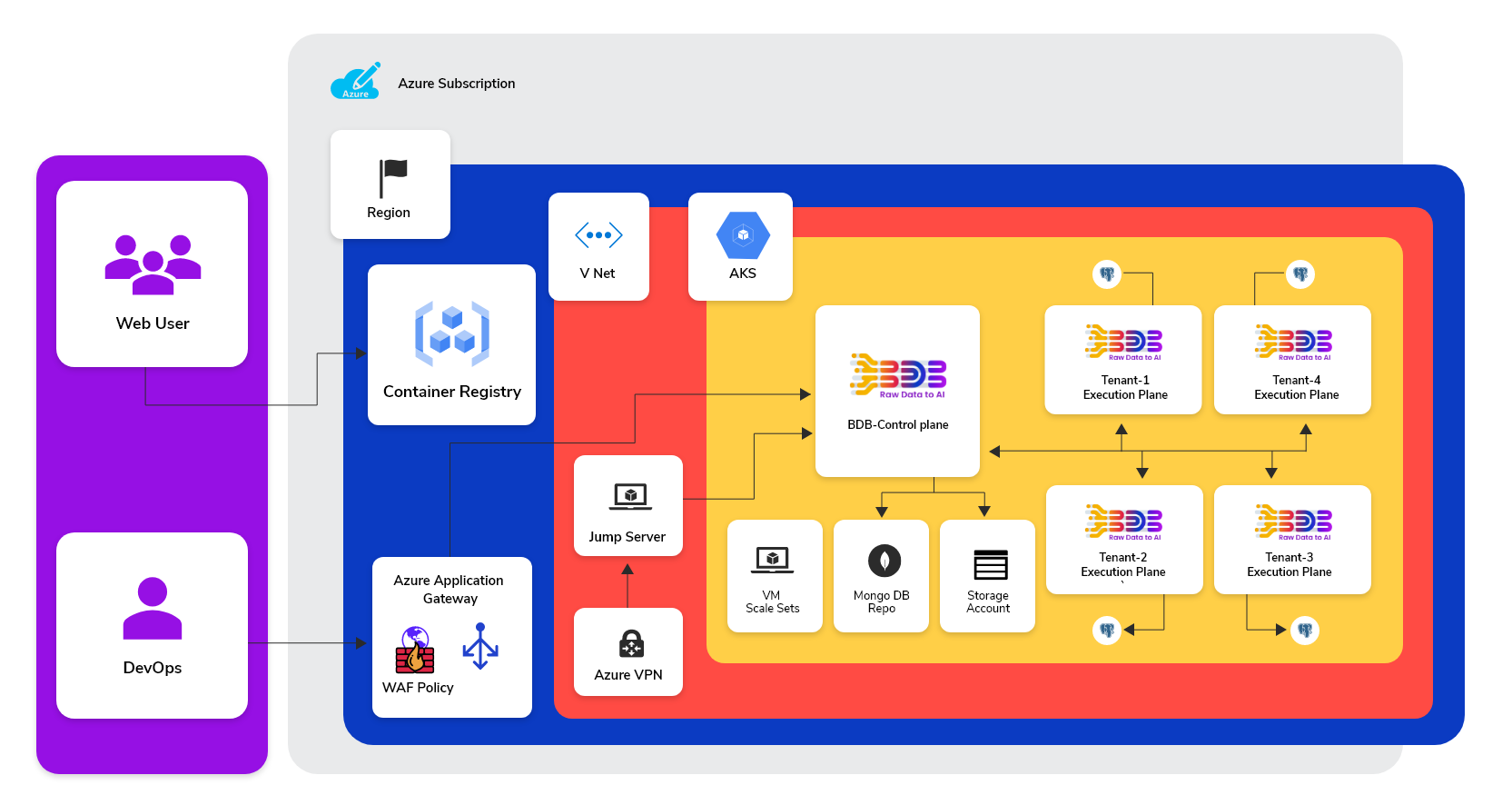BDB On-Cloud
In modern cloud infrastructure architecture, deploying a BDB platform involves a strategic amalgamation of various services and components to ensure scalability, security, and efficiency.
 ;
;

 ;
;

In deploying the BDB platform, several key services are utilized:
This service offers a container orchestration platform that simplifies deployment, management, and scaling of containerized applications.
This service provides persistent storage for applications running in Kubernetes clusters, ensuring data persistence even across container restarts or rescheduling.
The Web Application Firewall (WAF) protects applications from various cyber threats by inspecting HTTP traffic and enforcing security policies to block malicious requests.
Load balancers distribute incoming network traffic across multiple backend servers or nodes to enhance scalability, optimize resource utilization, and improve application availability.
Container registries serve as centralized repositories for storing, managing, and distributing container images, facilitating efficient deployment and collaboration among development teams.
Resources are deployed within a virtual network with a private subnet, enhancing security by isolating them from the public internet and other external networks.
Utilize Kubernetes namespaces to create logical boundaries between different environments and tenants. Each environment (Dev, Stg, Prod) and tenant should have its own dedicated namespace to isolate resources and configurations.
Enforce resource quotas and limits to prevent resource contention and ensure fair allocation of resources among different environments and tenants. Set limits on CPU, memory, and storage to prevent one tenant or environment from monopolizing resources.
Deploy monitoring and logging solutions to monitor the health, performance, and security of the platform infrastructure and applications. Utilize tools such as Prometheus, Grafana, and Elasticsearch to collect, analyze, and visualize metrics and logs from different environments and tenants.
Implement CI/CD pipelines to automate the build, test, and deployment processes across Dev, Stg, and Prod environments. Leverage tools like GitHub, GitLab CI/CD orchestrate pipeline workflows and promote code changes across environments in a controlled manner.
Container registries serve as centralized repositories for storing, managing, and distributing container images, facilitating efficient deployment and collaboration among development teams.
Resources are deployed within a virtual network with a private subnet, enhancing security by isolating them from the public internet and other external networks.